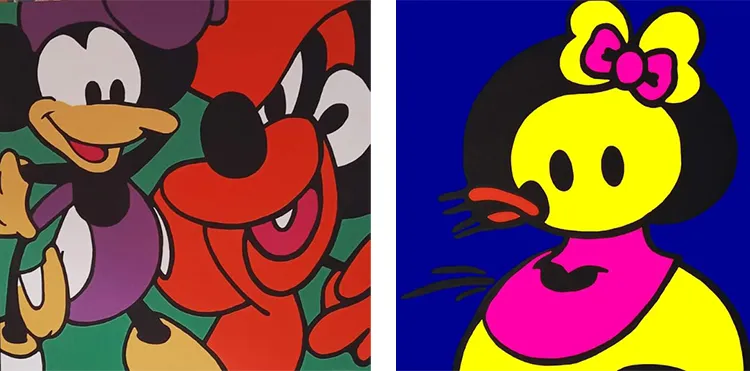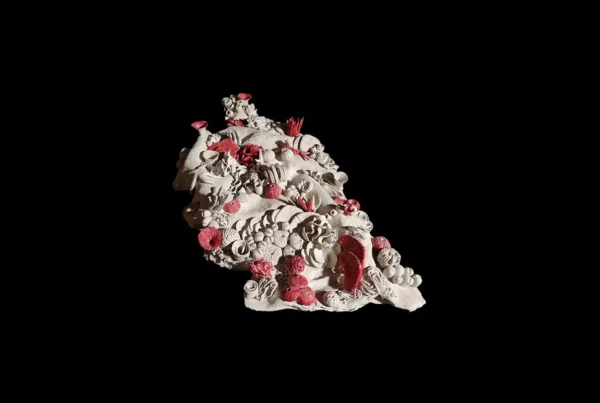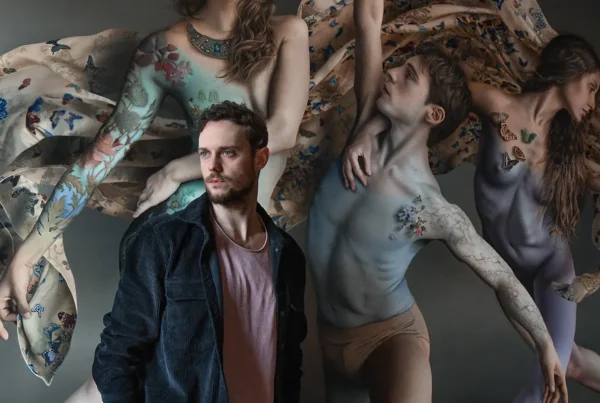“I want to create even more beauty, experiment with new expressive combinations but always with one goal: have fun and give a smile to who will see me.”
Guido Corazziari: The Fusion of Pop Art and Digital Expression
Born in the vibrant city of Bari, Italy, in 1952, Guido Corazziari’s life was immersed in art from the start. Raised in a family where creative pursuits were cherished, Corazziari’s path toward a career in the arts seemed almost predestined. His grandfather, Guido Corazziari Sr., was a skilled architect and artist, and both his parents nurtured a passion for the arts—his mother taught fine arts, while his father, a former movie-poster illustrator, inspired him to begin drawing and painting at an early age. Surrounded by art books and comic strips, Corazziari’s childhood world was one where Botticelli, Picasso, and Mickey Mouse all lived side by side, igniting an artistic imagination that would later blossom into a distinctive style.
As a child, Corazziari’s creativity was influenced not only by the classical art revered by his family but also by modern pop culture. Early television characters such as Calimero and Topo Gigio, along with cartoons from Disney and Hanna-Barbera, captivated him, while the 1960s explosion of pop art, particularly the work of Andy Warhol, left an indelible mark on his teenage years. These varied influences set the foundation for his future work, which blends classical techniques with bold, modern imagery. Throughout his life, Corazziari has strived to capture the joy and vibrancy of popular culture, a journey that has taken him across Europe and beyond, constantly pushing the boundaries of his artistic expression.
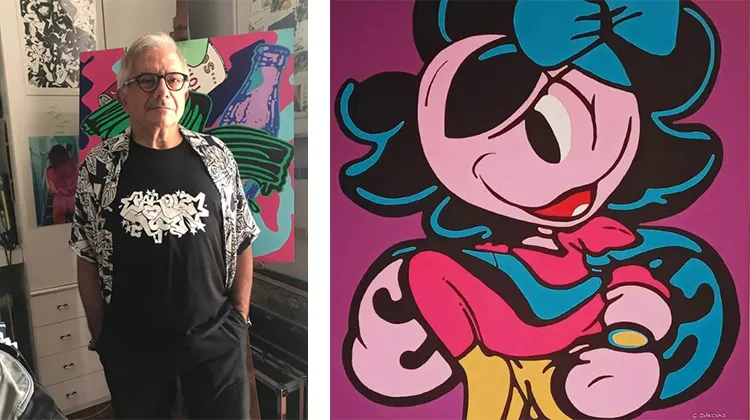
Guido Corazziari: From Architecture to Art Innovation
In the early 1970s, Corazziari moved to Florence to study architecture, where his formal education in art deepened. Florence, with its rich history and connection to the Great Masters, offered him a chance to immerse himself in the artistic traditions of the past while discovering the possibilities of contemporary art. During this time, he collaborated with ART/TAPES 22, an avant-garde video art production center, where he crossed paths with legendary figures like Bill Viola, Vito Acconci, and Andy Warhol. This exposure to international artists further expanded his vision, merging architecture, photography, and video art into his developing creative philosophy.
In 1980, Corazziari graduated with a degree in architecture, and soon after, he secured a teaching position at the prestigious Accademia di Belle Arti in Bari, where he would continue to inspire students for forty years. However, his artistic journey did not stop with academia. In 1983, a scholarship to the Domus Academy in Milan allowed him to integrate his knowledge of art with cutting-edge design and computer graphics. Here, he studied under influential figures such as Alessandro Mendini and Ettore Sottsass Jr., immersing himself in the world of fashion, design, and multimedia. The city of Milan, with its thriving fashion scene, played a crucial role in shaping his future artistic explorations.
As Corazziari’s career evolved, his focus returned to painting, a medium he had always been passionate about. Throughout the late 20th century and into the new millennium, he began creating works that blended his architectural precision with the vibrant energy of pop art. These paintings, often exhibited in major cities like Paris, London, and New York, reflect a deep commitment to combining glamour, design, and conceptual art in ways that challenge and engage viewers.
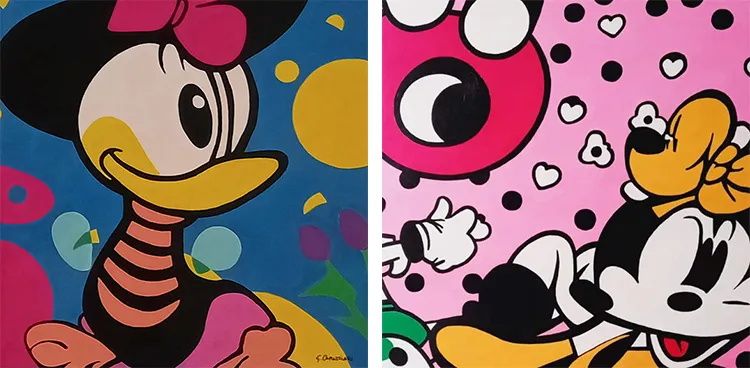
The Emergence of Tecno-Pop Art
In the dawn of the 21st century, Corazziari’s painting style crystallized into what he describes as “Tecno-Pop.” Drawing on the bold color palettes and iconic imagery of pop art, he infused his works with a modern twist by incorporating elements of digital design. His creative process often begins on a computer, where he meticulously examines color combinations before translating them onto canvas. The square format became a signature feature of his work, emphasizing balance and structure while allowing him to play with transparency, overlays, and linguistic games. Metaphor and antithesis, in particular, became central to his artistic language, prompting viewers to engage with his pieces on both an intellectual and emotional level.
The blending of high and low art—mixing Las Vegas neon signs with the abstraction of Jackson Pollock or placing Hollywood pin-ups next to Renaissance icons like Titian’s Venus—became hallmarks of Corazziari’s playful, thought-provoking style. His fascination with the intersection of glamour and conceptuality led to a body of work that is both visually striking and rich in meaning. By juxtaposing seemingly unrelated elements, Corazziari invites the observer to look deeper, to reflect on the ways in which modern life merges the trivial with the profound.
Corazziari’s experimentation with digital tools has only grown in recent years, as he has begun to incorporate artificial intelligence into his creative process. While still relying primarily on traditional media—acrylic paints and brushes—he uses AI sparingly to push the boundaries of what is possible in art. This combination of digital innovation with hands-on craftsmanship highlights his commitment to exploring new frontiers while staying rooted in the expressive possibilities of painting.
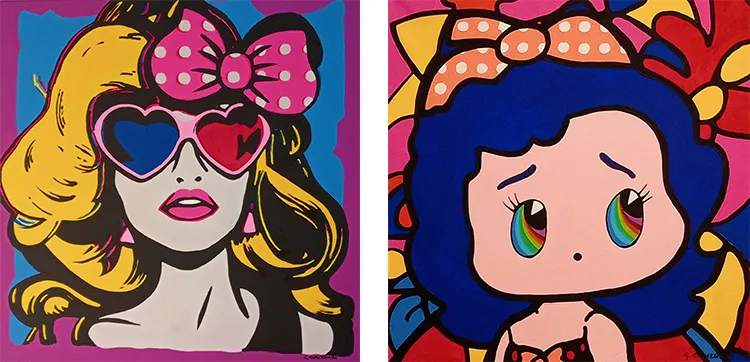
Guido Corazziari: A Legacy of Artistic Playfulness
For Corazziari, art is not just about creating beauty; it is about fun, experimentation, and bringing joy to others. His work has always been driven by a desire to make people smile, to invite them into a world where vibrant colors and provocative juxtapositions challenge conventional thinking. This ethos can be traced back to his childhood influences, where comic book heroes and pop culture icons lived alongside fine art in his imagination. Over the years, his travels have further enriched his artistic perspective, with frequent visits to cultural capitals such as Paris, London, Rome, and New York.
Despite his long career and extensive body of work, Corazziari remains humble in his approach to his own creations. He often says that his favorite painting is always his most recent, reflecting a constant desire for improvement and innovation. The drive to experiment with new combinations of visual language, whether through digital tools or traditional techniques, keeps his work fresh and exciting. His use of acrylic paints, which he praises for their brightness and fast-drying qualities, gives his pieces a lively, dynamic quality that mirrors his vibrant outlook on life and art.
Guido Corazziari’s legacy as an artist is one of joyful experimentation and a refusal to be confined by any one medium or style. His work spans the analog and digital worlds, combining the lessons of the past with the possibilities of the future. Through his paintings, he continues to celebrate the beauty of life, inviting viewers to see the world through a lens that is both playful and profound.
